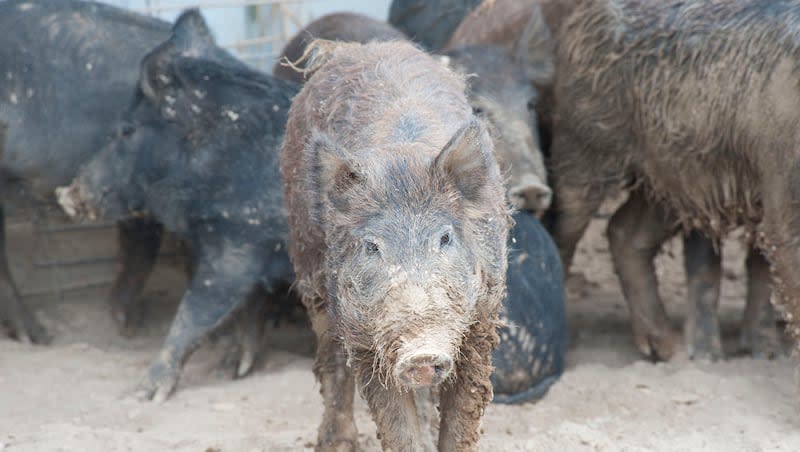Got wild swine? Then you have a problem

They are big, nasty, dangerous and damaging. Wild hogs are such a problem, it is open season to hunt them down and kill them in many states.
Wild hogs or feral swine are among the most destructive invasive animal species in the United States, capable of reaching 5 feet in length and weighing as much as 400 pounds. According to the U.S. Department of Agriculture, these wild creatures cause approximately $2.5 billion in agricultural damages each year.
Consider this: They can run 30 mph. They’re tusked, hairy, sharp-toothed and aggressive. They’ll eat nearly anything and they have no major natural predators.
The University of Georgia Center for Invasive Species and Ecosystem Health has been tracking feral hog sightings with its Early Detection & Distribution Mapping System, or EDDMapS. And now, researchers have calculated the total number of feral hog sightings reported in each state.
The overwhelming problem in Texas
Texas is overcome, according to the statistics one commercial hunting guide, Captain Experiences, compiled from the study.
The Lone Star State, for example, logged 2,425 feral hog reports, with 99.6% of its counties documenting populations. The number of counties with these beasts comes in at 253.
The company said wild hogs or feral swine have several qualities that have allowed the species to take hold. Allowed to graze freely in the wild, feral swine can grow to larger sizes than domesticated pigs with controlled diets. Attributes like intelligence and a strong sense of smell allow them to survive well in the wild.
In recent years, the report emphasized, the result has been a significantly increased range for feral pigs across the United States. Four decades ago, feral swine had a presence in only 20 states, primarily in the South. Over time, that figure has grown to 36 states as the animal’s range has expanded more westward and northward. And feral pigs’ presence has expanded within states as well. The number of counties affected by wild hogs has nearly tripled since the early 1980s, from 550 in 1982 to 1,496 in 2023.
The California Department of Fish and Wildlife said feral swine exist in 56 of its 58 counties and as far back as 1957, the state’s lawmakers designated them as a wild game mammal. The Fish and Game Commission soon established hunting seasons, bag and possession limits, method of take and the conditions for using dogs. By the early 1990s, the commission required hunters to possess wild pig license tags
The reason California inherited this problem has many nuances. In the early 1700s, Spanish and Russian settlers introduced domestic pigs to California as livestock and many became feral. In the 1920s, a Monterey County landowner introduced the European wild boar, which bred with domestic pigs.
The ‘feral swine bomb’
In the face of what is termed the feral swine bomb, landowners, governments, experts and others have responded with a variety of mitigation tactics — to varying success. One of the most popular among the public is hunting, which has grown into a common recreational activity and is only lightly regulated in many states. However, the strategy has limited effectiveness, as hogs often relocate in response to hunting pressure.
In Utah, there is a problem as well. Captain Experiences, again using the Georgia university’s research, said there have been 23 feral hog reports and the number of counties with the risk number four.
Faith Jolley, with the Utah Division of Wildlife Resources, did not dispute the findings in this latest report but said the wild hogs or feral swine has not reached proportions in Utah like other states.
“Utah does not currently have any standing herds of feral hogs. DWR biologists don’t have any evidence that established, reproductive groups of feral hogs are present in the state. While some hog sightings have been reported in Washington County in past years, it’s hard to say if it’s a one-off thing or an established generation of swine,” she said. “Feral hogs have been present in Utah previously. A wild herd of Russian boars was reported on Fremont Island in 2011. Federal and state wildlife and agricultural officials visited the island and killed 10 of the feral hogs, due to disease concerns and because they can have negative impacts on the habitat.”
In 2012, the Legislature passed a bill that made it illegal to release swine on public or private property for hunting purposes, she added.

